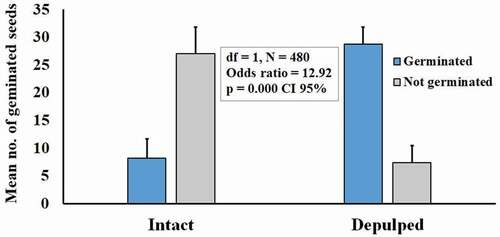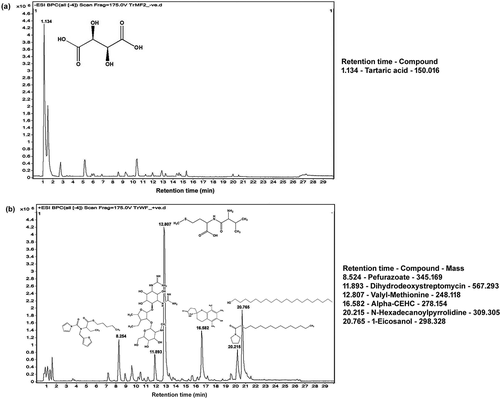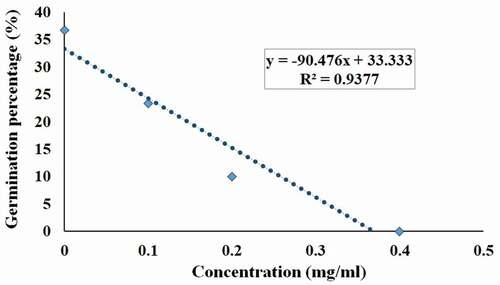Figures & data
Figure 1. Germination deinhibition experiment using intact fruits (leaving the exocarp intact), and depulped seeds of Tamarindus indica L. Each value in the graph shows mean ± SE from six independent experiments with 40 seeds for each treatment (N = 480)

Figure 2. Gas and liquid chromatography–mass spectrometry (GLC-MS) spectra of (a) purified TrMF or methanol fraction and (b) purified TrWF or water fraction of Tamarindus indica L. fruit pulp (including exocarp)

Figure 3. Germination percentage data depicting dose-dependent germination inhibition using tartaric acid (commercial) at different concentrations on viable Tamarindus indica L. seeds. Each value in the graph shows mean from three independent experiments (N = 420). The effect was significantly dose- dependent with R2 = 0.937

